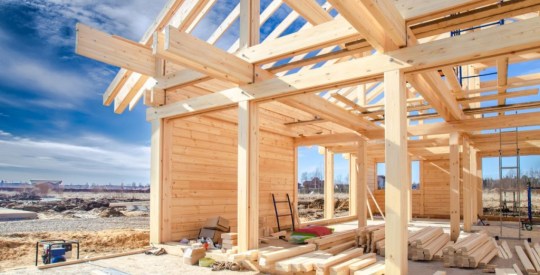The latest proof of the government’s growing influence in the mortgage banking sector came Tuesday morning from the Mortgage Bankers Association, which said that of all mortgage applications taken during the month of October, 32.9 percent were for government-insured loans — primarily borrowers looking to apply for an FHA-eligible loan, although VA loans are included in the total as well — compared to 10.3 percent one year ago. The government-insured share has increased from 9.4 percent at the start of this year, underscoring the dramatic and fundamental shift that has taken place among originators and secondary market participants; Oct.’s total is the highest government share since Feb. 1991, the MBA reported, but it isn’t the highest ever recorded. In Feb. 1990, during the S&L crisis, government-share of mortgage applications reach 43.8 percent. See the MBA’s statement. “This increase in the share of government-insured mortgage applications provides further evidence that there are still loans available to qualified borrowers, particularly through the FHA,” said MBA’s chairman David Kittle. “The mortgage market remains fully operational and lenders are working to ensure borrowers with sufficient down payment and good credit have the opportunity of home ownership.” Issuance volume to-date in November backs up the new-found strength of the FHA, as well. According to data provided to HousingWire by eMBS, Inc., total Ginnie Mae issuance this month is outstripping activity at both GSEs — Ginnie has issued $27.6 billion in fixed and adjustable-rate mortgage securities this month, according to the data service. Last month, Ginnie topped both Fannie Mae (FNM) and Freddie Mac (FRE) in fixed-rate mortgage security issuance volume, as well. Data from the U.S. Department of Housing and Urban Development show that the level of conventional to FHA refinance applications has increased 89.2 percent on a year-over-year basis in October; actual refinances have jumped 144.3 percent. Based on the MBA survey, application volume for government-insured loans was up 113.6 percent in October from a year ago, while application volume for conventional loans was down 49.7 percent, showing that borrowers are still moving from conventional to government-insured mortgages. All which underscores the new, critical role the FHA is playing in the mortgage market — but questions are already being raised about the safety of the government-insured lending program. BusinessWeek’s cover story this week, for example, focuses on how FHA lending has allegedly become a wolf in sheep’s clothing, the new subprime. “[T]here’s a severe danger that aggressive lenders and brokers schooled in the rash ways of the subprime industry will overwhelm the FHA with loans for people unlikely to make their payments,” authors Chad Terhune and Robert Berner write in the story. “Exacerbating matters, FHA officials seem oblivious to what’s happening — or incapable of stopping it.” Lawmakers also on Nov. 20 loosened criteria on a $300 billion mortgage program dubbed Hope for Homeowners, which will allow troubled homeowners to refinance into an FHA-insured mortgage. The program had gotten off to a slow start (see story), so HUD agreed to allow loan-to-value ratios to rise as high as 96.5 percent under the program, and said it would make up-front payments to second-lien holders choosing to participate. Write to Paul Jackson at [email protected]. Disclosure: The author held no relevant investment positions when this story was published. Indirect holdings may exist via mutual fund investments. HW reporters and writers follow a strict disclosure policy, the first in the mortgage trade.
Government Share of Mortgage Apps Soars: Report
Most Popular Articles
Latest Articles
Do housing starts show we’re going into a recession?
Housing leads the U.S. economy into and out of a recession, as housing starts fall into a recession and rise when we are recovering.



